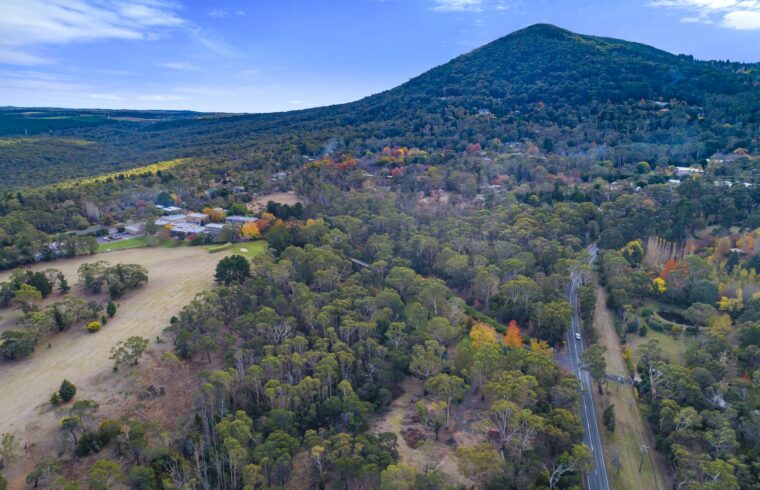Our first in-person conference in 3 years was held at the VEMI Conference Centre, Mount Macedon on Thursday 24th and Friday 25th of November 2022, preceded by an optional field trip, workshop and BBQ. Conference Papers are available here.
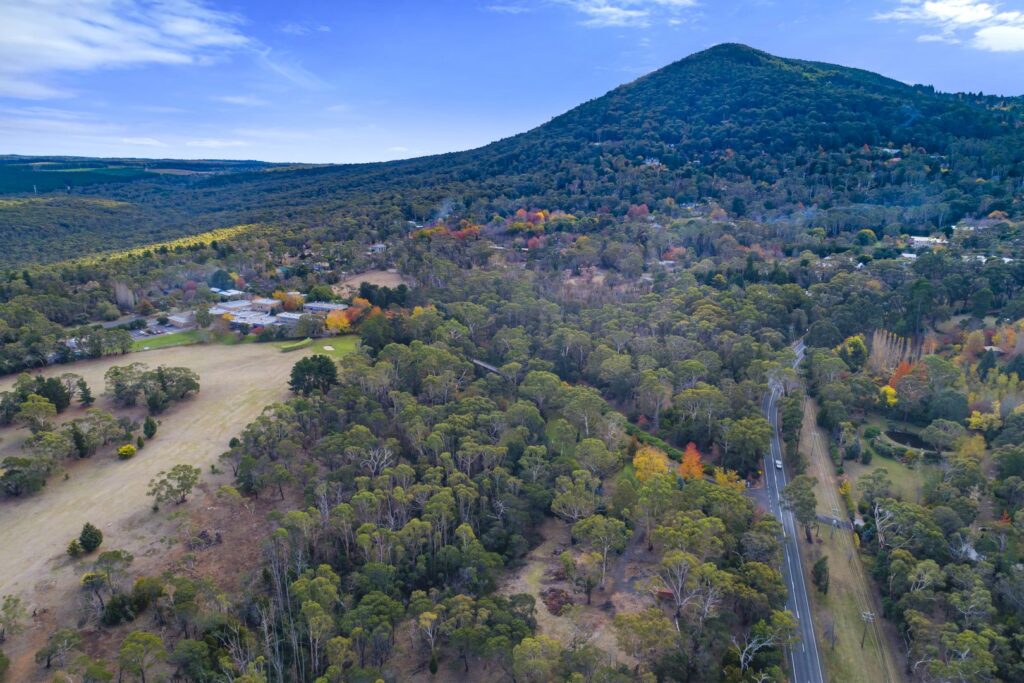
Wednesday 23 November 2022
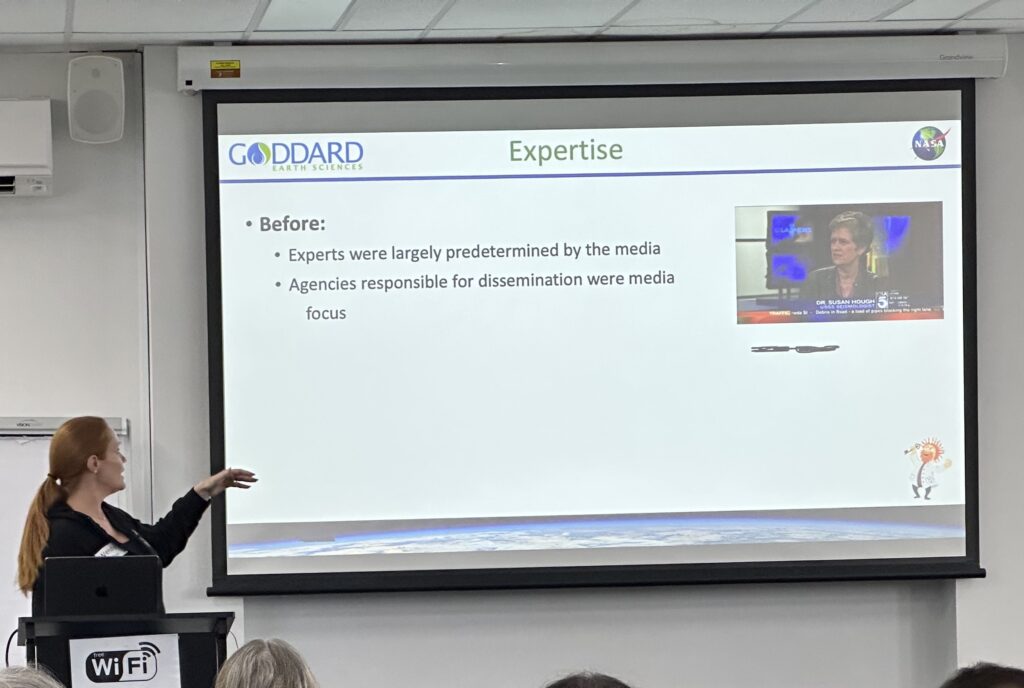

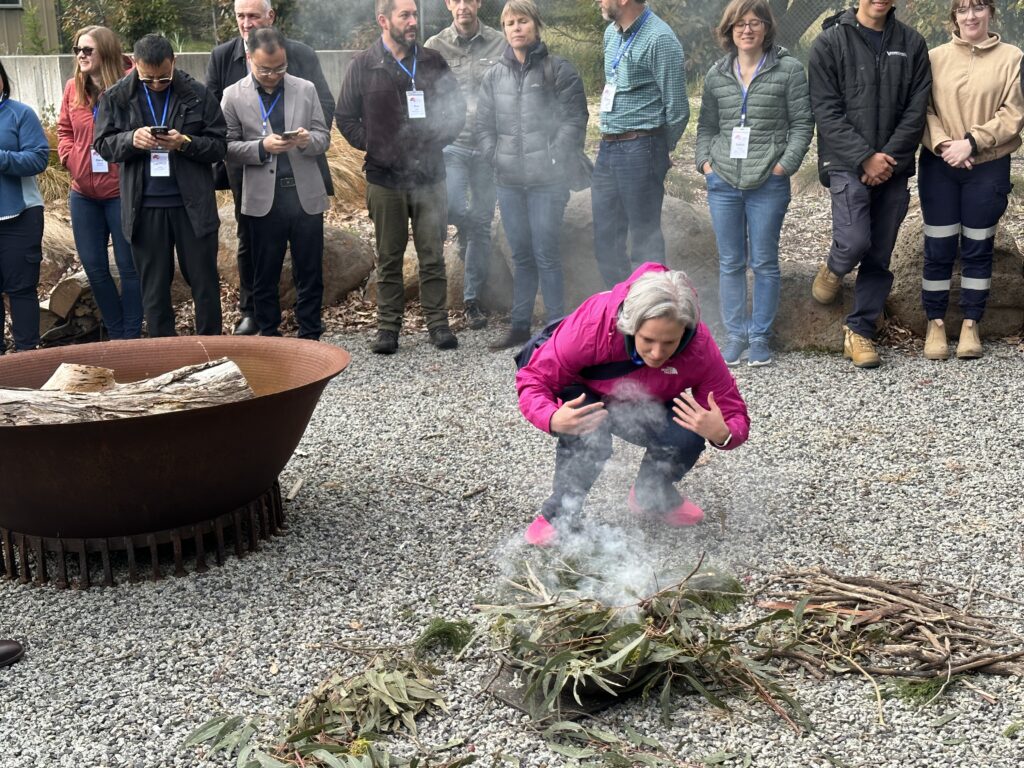
The Field Trip bus departed Southern Cross Station (Melbourne CBD) for a tour of neotectonic faults west of Melbourne, led by Dr Dee Ninis (SRC) and Dr Dan Clark (GA), and concluded at Major Mitchell Lookout near the Mt Macedon Memorial Cross. A Science Communication Workshop was then held at at VEMI, presented by AEES keynote speaker Dr Wendy Bohon. This was followed by a Welcome to Country and Smoking Ceremony performed by the Wurundjeri Woiwurrung Elder Uncle Bill Nicholson, and the day was concluded with a BBQ Buffet dinner at VEMI.
Thursday 24 November 2022
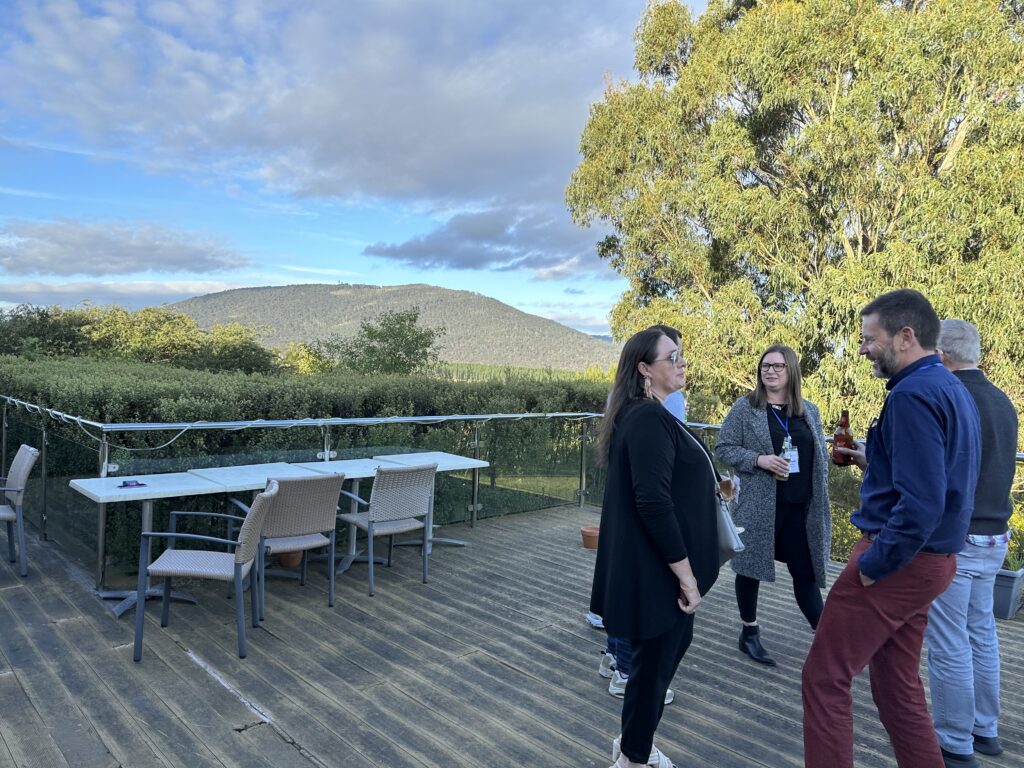
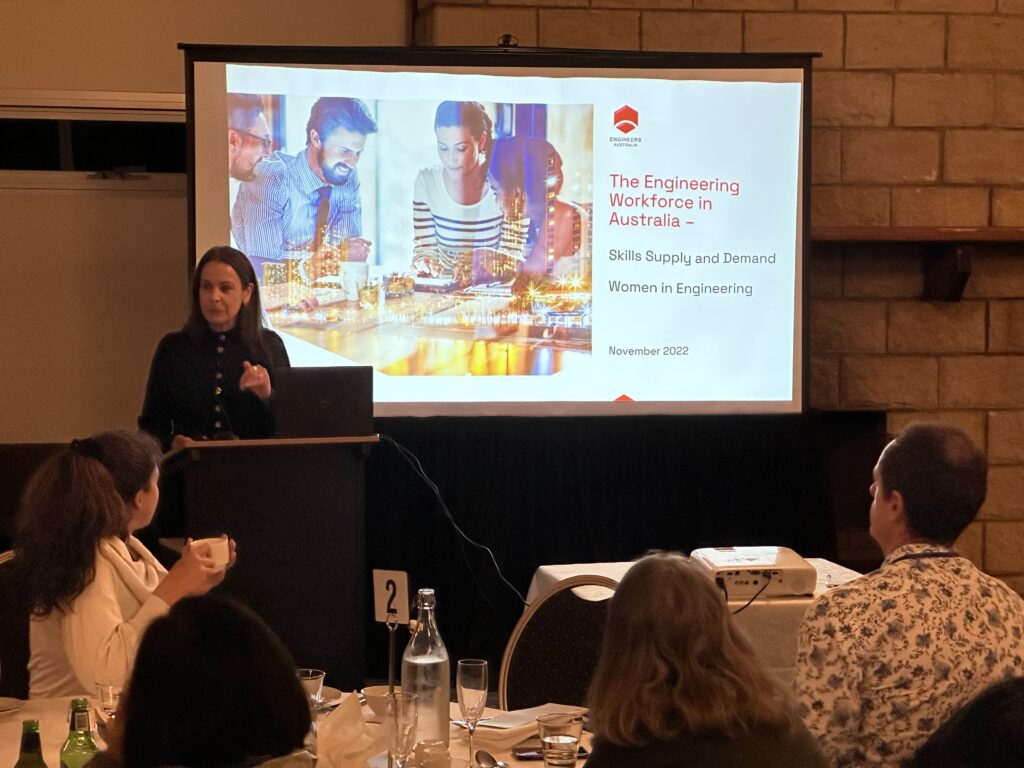

The Conference opened with keynote speaker Associate Professor Katrin Beyer, with invited speaker Marta Giaretton in the morning, and keynote speaker Dr Wendy Bohon after lunch. The Annual General Meeting was held for AEES members at the end of the day, where a new Executive Committee was elected.
The Conference Dinner was held at the Macedon Ranges Hotel and Spa, where Engineers Australia Chief Engineer Jane MacMaster spoke about the challenges facing women and girls pursuing career paths in engineering. The Charles Bubb Medal was also presented to former AEES president John Wilson in recognition of his contribution to the Society and to the field of Earthquake Engineering. We also presented our Secretariat of 15 years, Sharon Anderson, with a small gift to acknowledge her years of service to the Society and to wish her the best of luck in her new career.
Friday 25 November 2022

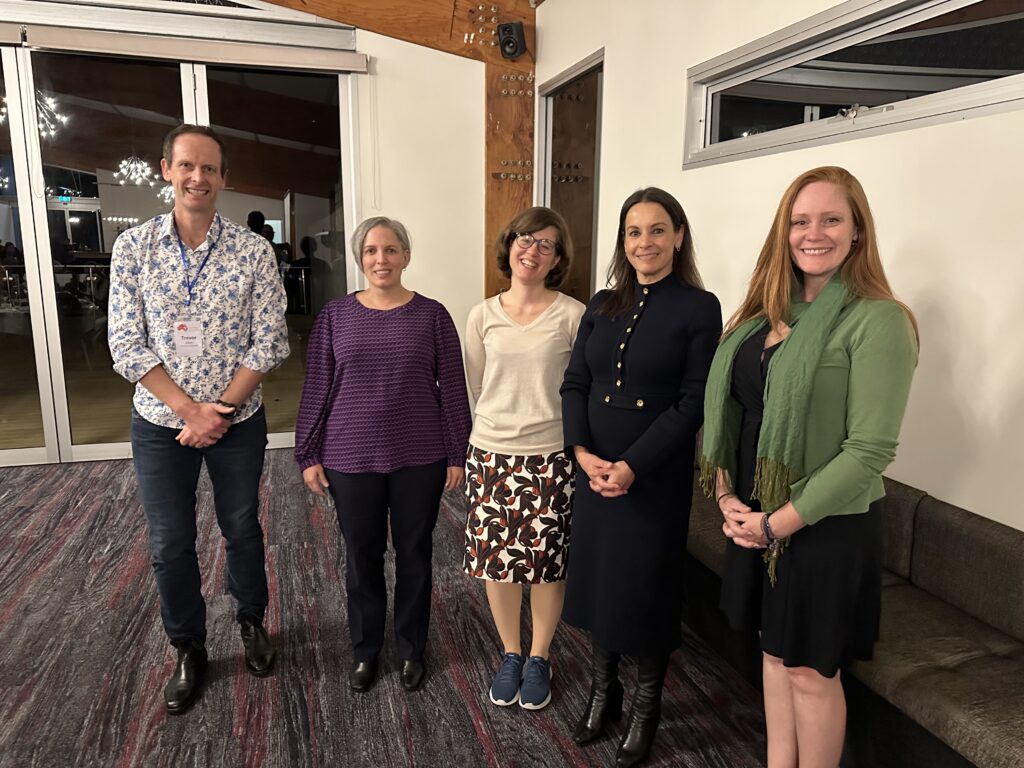
The second and final day of the conference started with keynote speaker Hélène Dutrisac, with invited speaker Dr Michelle Salmon speaking later in the day. Links to the full program and papers will be available soon.
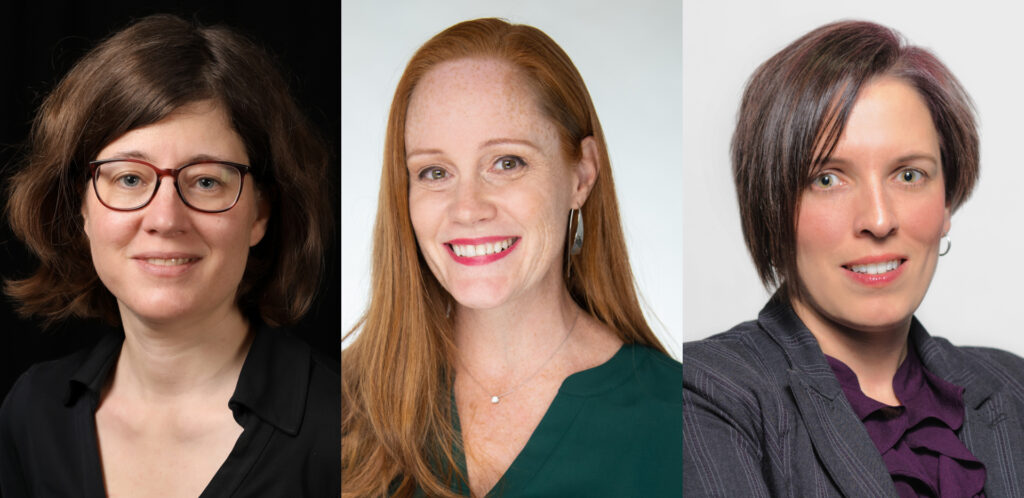
WOMEN IN EARTHQUAKE ENGINEERING AND SCIENCE COMMUNICATION
This year’s theme recognises the importance that gender diversity plays in bringing new ideas and perspectives to solve problems in earthquake engineering and engineering seismology. Through this meeting the Society aims to highlight the contribution that women make to our profession and inspire young women and girls to pursue a career in earthquake engineering and seismology as well as other STEM professions. We welcome papers from all members and those interested in promoting the practice of earthquake engineering and engineering seismology in Australia. Topics included:
- Women in earthquake engineering and other STEM professions
- Communication of science, natural hazards and risks
- Challenging current design standards
- Recent earthquakes – observations, impacts and response
- Disaster planning, response, recovery and resilience studies
- Seismic retrofit of existing structures
Keynote Speakers

Associate Professor Katrin Beyer
Head of the Earthquake Engineering and Structural Dynamics Laboratory, École Polytechnique Fédérale de Lausanne (EPFL)
Seismic behaviour of historical stone masonry structures – how well can we predict it?
Katrin Beyer received her PhD from the University of Pavia, Italy and is currently associate dean of the School of Architecture, Civil and Environmental Engineering (ENAC) at EPFL. She is member of the executive committee of the European Association for Earthquake Engineering and was responsible for the revision of the masonry section of the European seismic design code (Eurocode 8 Part 1). Her research interests include the seismic behaviour of reinforced concrete walls and of unreinforced masonry structures and large-scale structural testing.
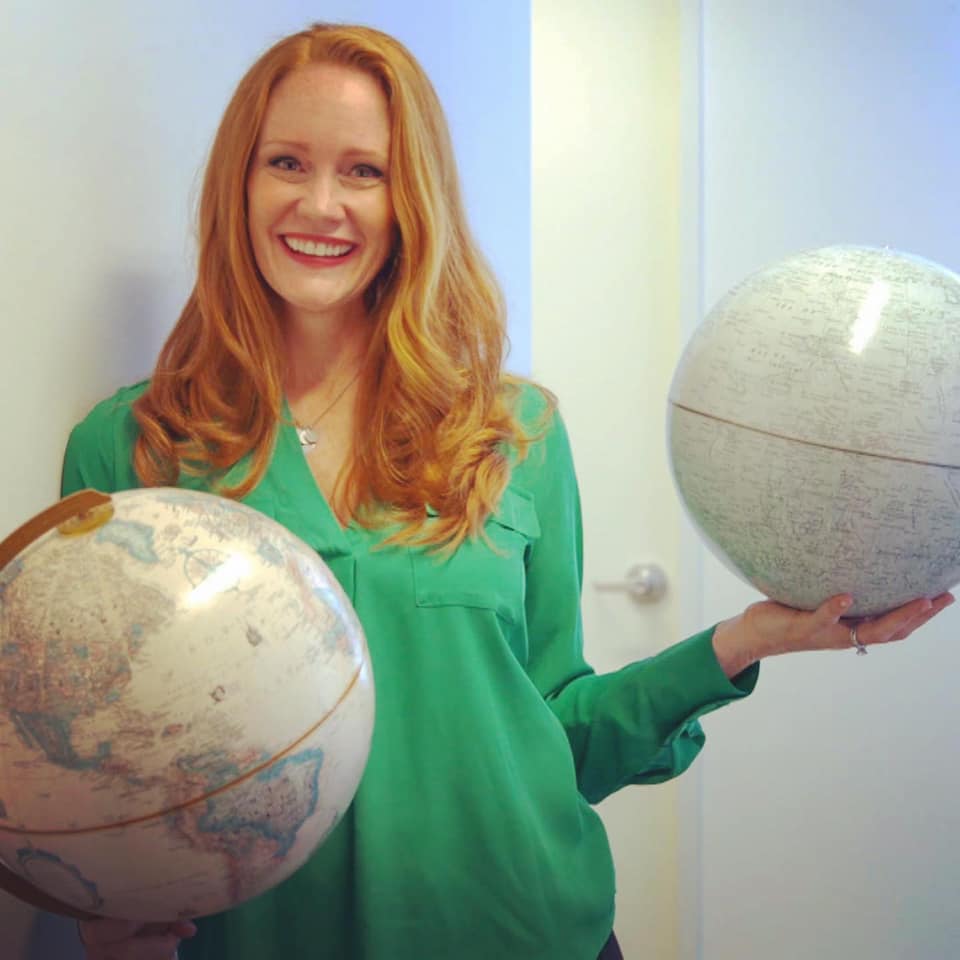
Dr Wendy Bohon
Geologist and Communication Strategist, NASA Earth Sciences Division, Goddard Space Flight Center
Geohazards Communication: how, why, and when to talk about earthquakes
Wendy Bohon is a geologist who studies earthquakes and works to improve the communication of hazard and risk before, during and after rapid onset geologic hazards. Dr. Bohon has a BA in Theatre and Geology and an MSc and PhD in Earthquake Geology and geoscience education. She has worked on many tectonics related projects in her career, including the B4 LiDAR project in Southern California, climate and tectonics studies in Northwestern Argentina, GPS deployment projects in Bolivia, thrust fault studies in Argentina and the tectonic evolution of the southwestern margin of the Tibetan Plateau in India. Her research interests include geomorphology, paleoseismology, landscape evolution, geologic hazards communication and geoscience education. Wendy spent 7 years at the Incorporated Research Institutions for Seismology as a geologist and Senior Science Communication Specialist, and in 2022 started her role at the NASA Earth Observatory.
Wendy is also a AAAS If/Then Ambassador, has served on the Executive Leadership Board of 500 Women Scientists, and is the author of the blog “Twinning at Motherhood“. She is also the founder of the social media managing and consulting company SpaceFace Social Media. She lives in MD with her husband, daughter, twin boys and a menagerie of animals.
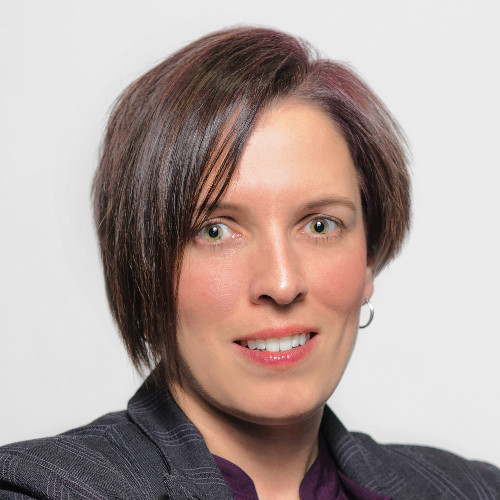
Hélène Dutrisac
Deputy Chief Civil Engineer and Head of Structural Engineering in the Directorate of Architectural and Engineering Services at the Department of National Defence in Canada
Advancements in code seismic provisions in Canada
Hélène Dutrisac (P. Eng., M. Eng., MBA) has over 20 years of combined public, private and industry sector experience in structural and earthquake engineering including analysis, design, field review, project management, policy development and regulatory enforcement. Ms. Dutrisac has been involved in the development of codes and standards over the last decade, in particular, the seismic provisions of the National Building Code of Canada (NBC) and is a member of several Canadian Standards Association (CSA) structural material design standard technical committees. Ms. Dutrisac is also currently pursuing research in performance-based seismic design at the University of Ottawa.
Dinner Speaker

Jane MacMaster
Chief Engineer, Engineers Australia
Engineering for Australia Taskforce – encouraging girls and women into engineering (and other STEM) professions
In 2020, Jane MacMaster became EA’s first Chief Engineer. Following a successful career in the mechanical, aerospace, systems design engineering sector, Jane worked as a senior advisor within the strategy unit of the Department of the Prime Minister and Cabinet, and later as a management consultant in the financial services sector. She is passionate about the engineering profession and its contribution to societal challenges through design, problem-solving, technology, systems approaches, asking the right questions and thinking things through.


